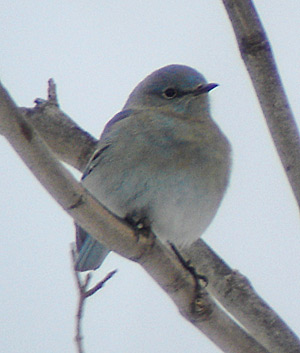 Mountain Bluebird, Sialia currucoides, Ellis Hollow,
Town of Dryden, Tompkins Co., NY, 6 March 2005.
Mountain Bluebird, Sialia currucoides, Ellis Hollow,
Town of Dryden, Tompkins Co., NY, 6 March 2005. Mountain Bluebird, Sialia currucoides, Ellis Hollow,
Town of Dryden, Tompkins Co., NY, 6 March 2005.
Mountain Bluebird, Sialia currucoides, Ellis Hollow,
Town of Dryden, Tompkins Co., NY, 6 March 2005.
All pictures were taken by Jay and Kevin McGowan and are © Kevin J. McGowan. They were taken with a Sony Cybershot or an Olympus D-40 digital camera through Swarovski scopes.
Found by Brian Sullivan and seen by many observers in the next hour, it appeared to be an immature male. It was associating with Cedar Waxwings and American Robins.
| Other photographs taken by Tim Lenz (including some of
the wings and back) can be seen at http://www.people.cornell.edu/pages/tcl6/MOBL1.jpg http://www.people.cornell.edu/pages/tcl6/MOBL2.jpg |
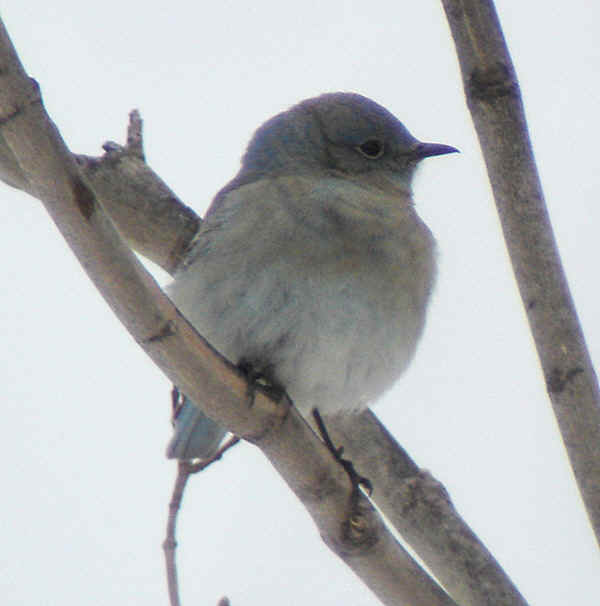
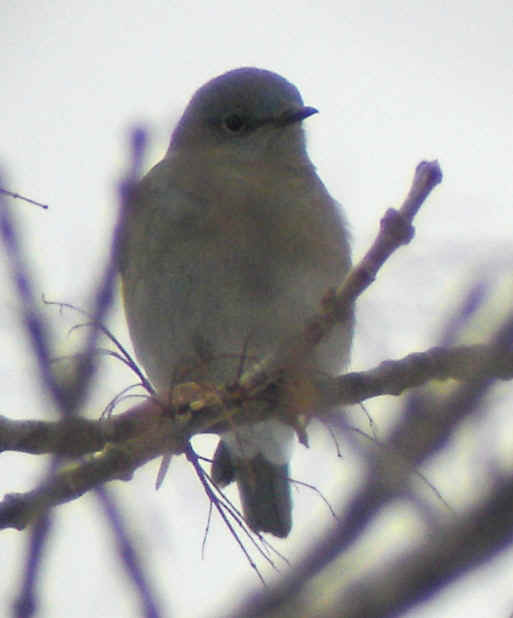
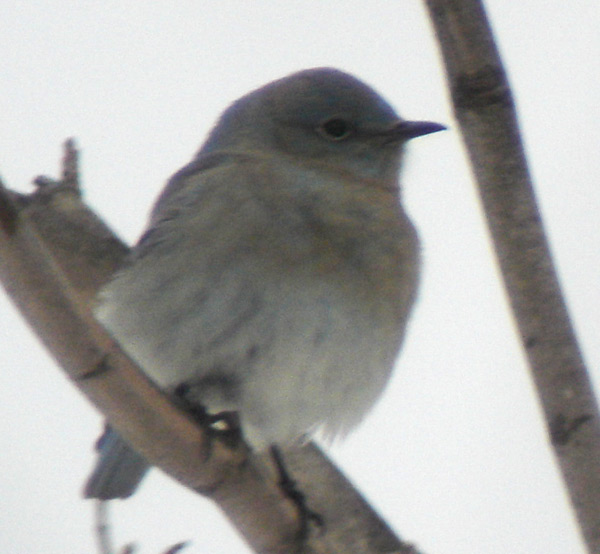
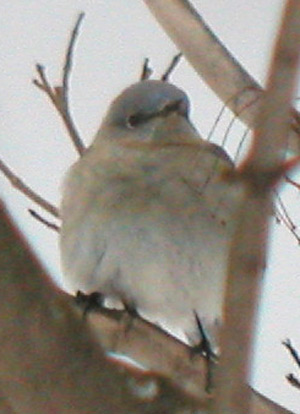
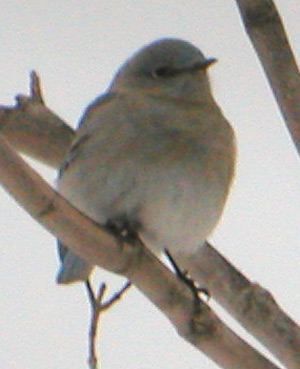
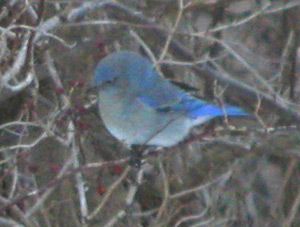
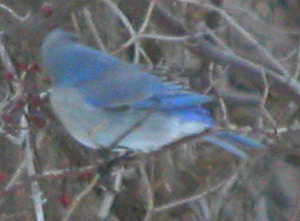
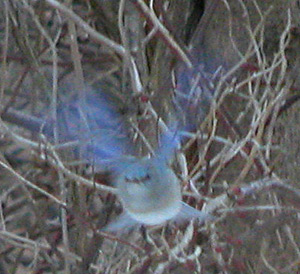
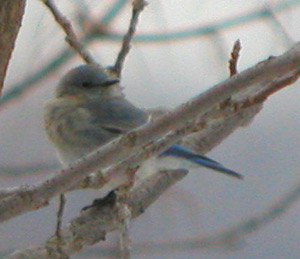
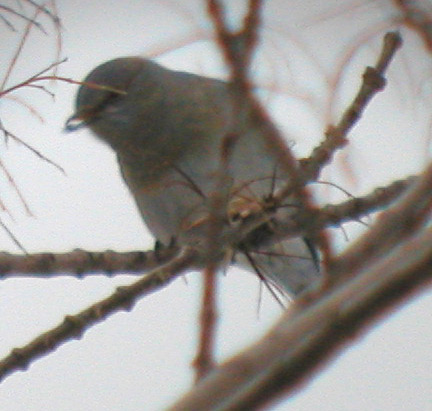
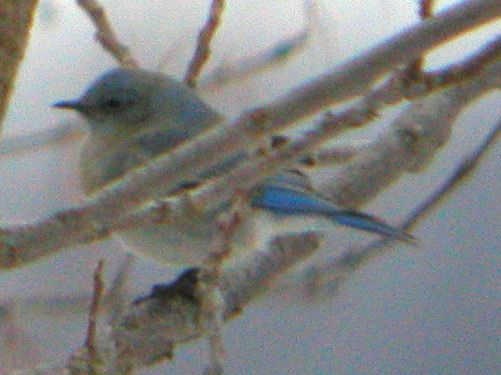
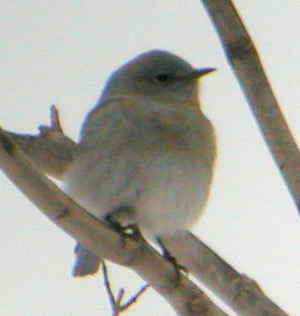
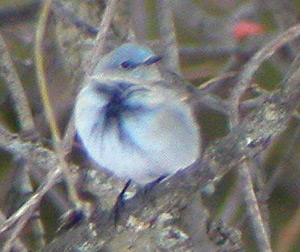
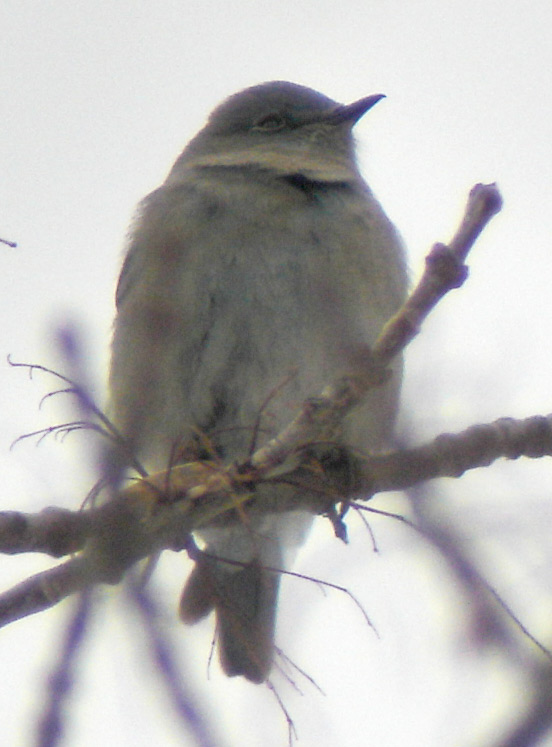
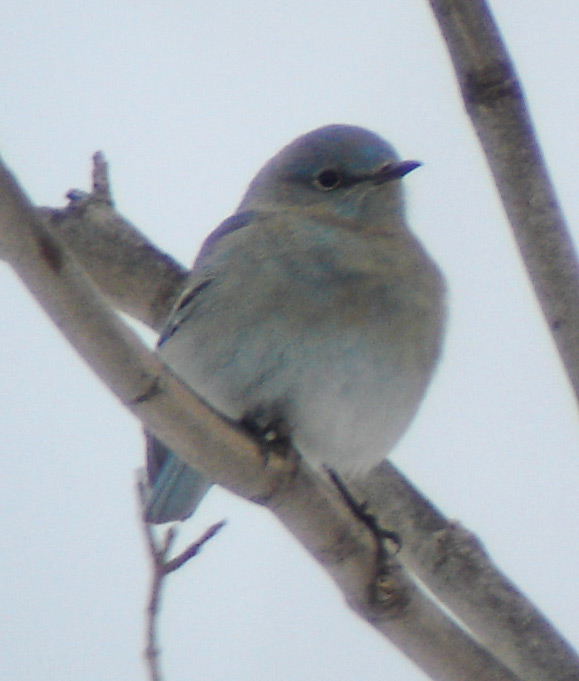
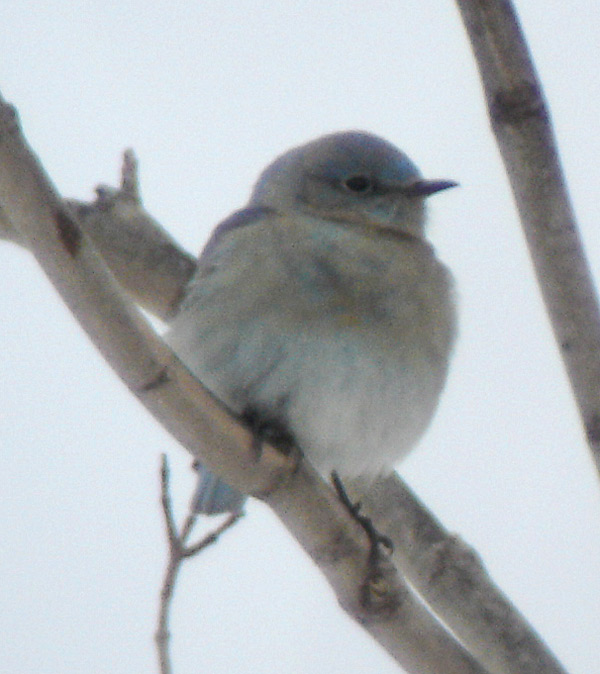
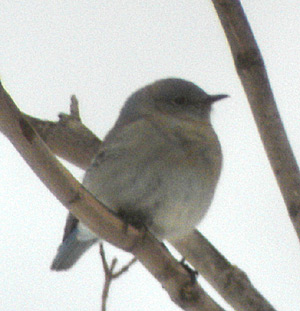
For comparison purposes, I include some of our photographs of Mountain and Eastern bluebirds. Note the thick, relatively stubby looking, blunt bill of the Easterns and the more slender, more pointed bill of the Mountains (most like the Dryden bird). I have no photos of cold (ergo fluffed) Mountain Bluebirds for comparison of shape.
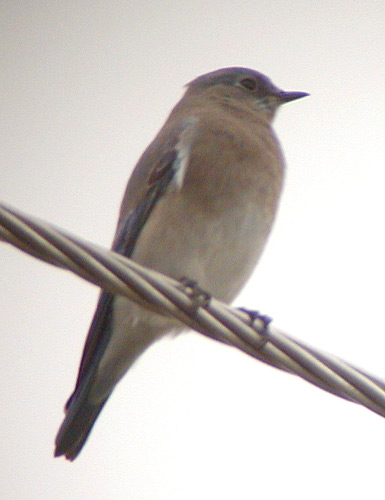 Female Mountain Bluebird, Montana, 14 October 2000. |
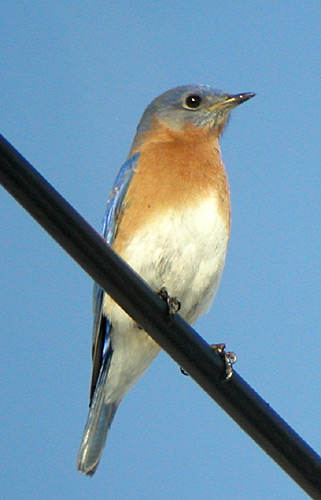 Male Eastern Bluebird, New York, 1 February 2003. |
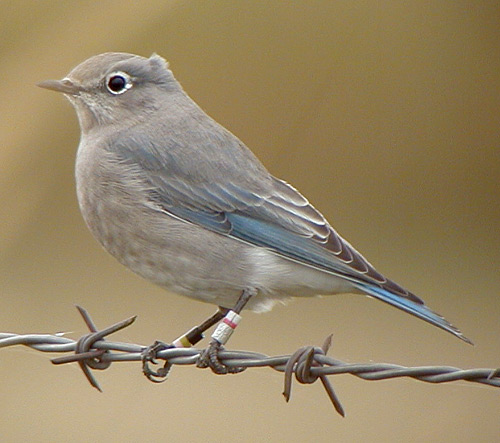 Female Mountain Bluebird, Montana, 14 October 2000. |
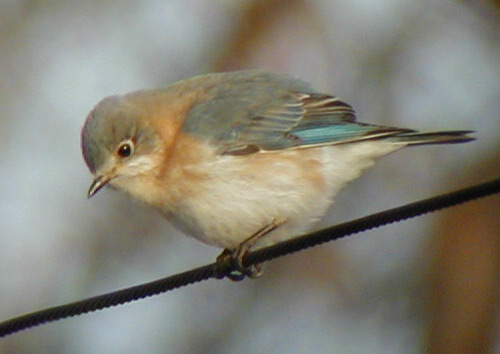 Female Eastern Bluebird, New York, 28 January 2001. This is the palest female Eastern Bluebird I've ever seen. But note that the buff color is still obvious on the flanks, sides of the chest, and on the neck and up behind the auriculars. |
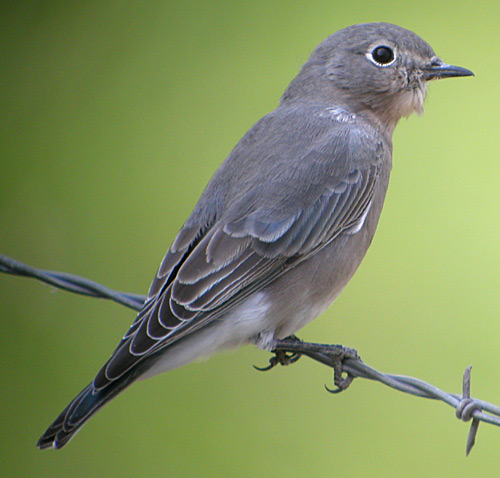 Female Mountain Bluebird,
Montana, 14 August 2003. Female Mountain Bluebird,
Montana, 14 August 2003.Note the thin bill with the hooked tip. |
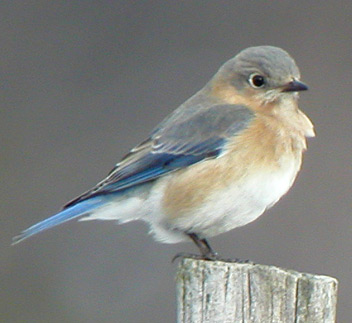 Female Eastern Bluebird, New York, 1 March 2003. |
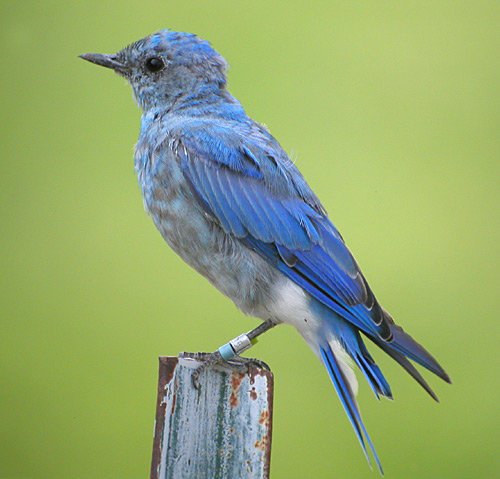 Male Mountain Bluebird, Montana, 14 August 2003. Nasty, molting plumage, but still a pretty bird. Again, note the slight hook at the tip of the bill. |
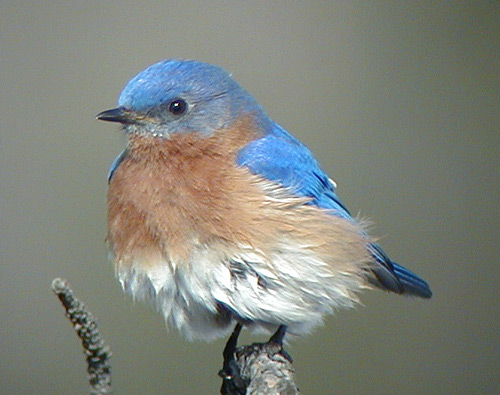 Male Eastern Bluebird, New York, 23 March 2001. Fluffed just after bathing. |
The following photos are of specimens from the Cornell University Museum of Vertebrates.
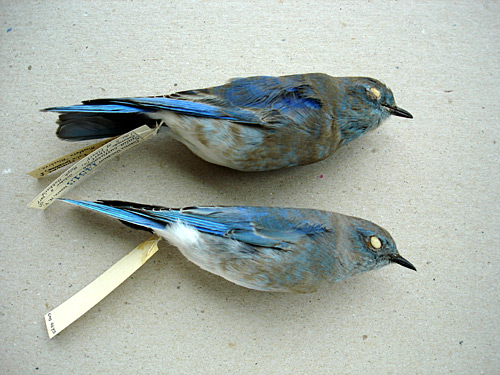 Here are two male Mountain Bluebirds (top CUMV 14513, Oklahoma, 3 October 1932; bottom CUMV 14503, Colorado, 8 October 1917). Notice the extensive rusty buff coloring all across the chest and onto the back. This color results from the buffy tips on the otherwise blue feathers of the chest, sides, and back. |
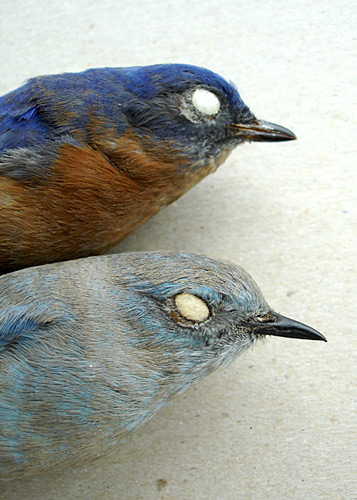 |
| Here is a bill comparison of Eastern Bluebird (top, male, CUMV 13695, New York, 21 March 1936) and Mountain Bluebird (bottom, male, CUMV 14503, Colorado, 8 October 1917). Note the Mountain Bluebird bill is longer, more slender, and more pointed. |
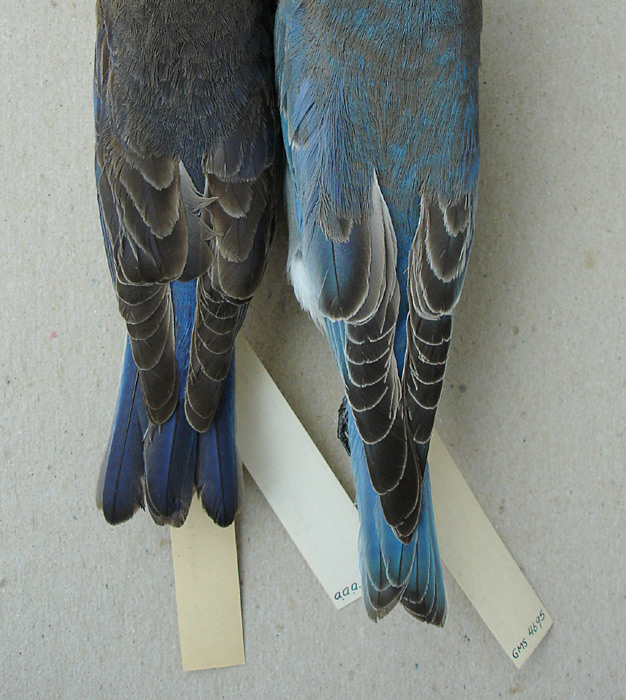 |
| Here is a wing comparison of Eastern Bluebird (left, female,
CUMV 14476, Florida, 15 April 1924) and Mountain Bluebird (right, male, CUMV 14503,
Colorado, 8 October 1917). First, both species have long wings, relative to many songbirds. The Mountain Bluebird has a much longer wing, but the bird itself is larger, as is the tail. Overall they are shaped very similarly. On Eastern Bluebird the outermost primary (p10) is just about the same size as p9, and is mostly hidden in this view. The p10 of the Mountain Bluebird is just slightly longer than p9 (note that the right wingtip shows just beyond the left p10 in this photo). The Eastern Bluebird is showing 7 primaries beyond the longest secondaries. The Mountain Bluebird shows 8. Both show a cluster of the inner feathers and another cluster of the 3 outermost, but the Mountain Bluebird has a looser cluster at the tip, with more space between p9 and p8. Subtle, and not quite as distinctive in my mind as some would like you to believe. Perhaps the best way to distinguish them is to think of the exposed primaries being the same length as the exposed secondaries in the Eastern Bluebird, but in the Mountain Bluebird the primaries are nearly twice as long as the secondaries. |
Return to the Bad Photos page.
Return to Kevin McGowan's home page.
Go to the Crow Page.